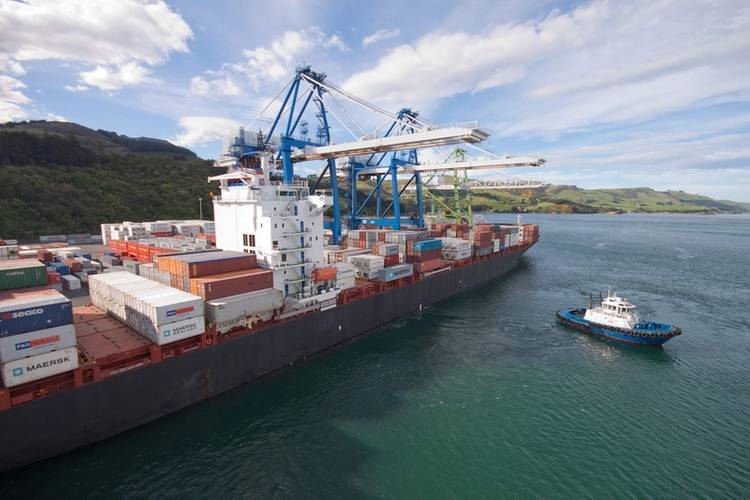Total annual operating costs in the shipping industry fell by an average of 0.8 percent in 2014, said international accountant and shipping consultant Moore Stephens. This compares with the 0.3 percent average fall in costs recorded for 2013. All categories of expenditure were down on those for the previous 12-month period, confirming that ship owners and operators continued to manage costs sensibly and to watch their cash carefully in 2014.
The findings are set out in OpCost 2015, Moore Stephens’ ship operating costs benchmarking tool, which reveals that total operating costs for the tanker, bulker and container ship sectors were all down in 2014, the financial year covered by the study. On a year-on-year basis, the tanker index was down by 2 points, or 1.1 percent, while the bulker index fell by one point, or 0.6 percent. The container ship index, meanwhile, was down by 2 points, or 1.2 percent. The corresponding figures in last year’s OpCost study showed a rise of 2 points in the tanker index, and falls of 2 points in the bulker and container ship indices.
There was an 0.1 percent overall average fall in 2014 crew costs, compared to the 2013 figure, which itself was 0.2 percent down on 2012. By way of comparison, the 2008 report revealed a 21 percent increase in this category. Tankers overall experienced a fall in crew costs of 0.4 percent on average, compared to the 1.8 percent increase recorded in 2013. Within the tanker sector, Suezmax tankers reported an overall increase of 1.6 percent in crew costs, while for operators of Handysize product tankers the increase was 0.2 percent. All other vessels in the category showed a fall in crew costs for 2014.
For bulkers, meanwhile, crew costs were unchanged, having recorded a 0.5 percent average fall for the previous year. The operators of Handymax bulkers and Handysize bulkers paid 2.3 percent and 0.5 percent more, respectively, in crew costs than in 2013, but there was a 2.0 percent fall in this respect for Capesize bulkers, and an 0.5 percent drop for Panamax bulkers.
Expenditure on crew costs was unchanged in the container ship sector, having stabilized in 2013 at the previous year’s level. The 2.5 percent increase in crew costs recorded for containerships in the 1,000-2,000 teu category contrasted with the 1.4 percent fall in such costs for bigger containerships (2,000-6,000 teu).
Expenditure on stores was down by 2.4 percent overall, compared to the fall of 1.9 percent in 2013. The biggest fall in such costs was the 5.3 percent recorded by operators of Handysize bulkers, closely followed by container ships in the 1,000-2,000 teu range (5.1 percent). For bulk carriers overall, stores costs fell by an average of 3.7 percent, compared to a fall of 4.1 percent in 2013, while in the tanker and containership sectors the overall reductions in costs were 0.7 percent and 3.0percent respectively. The only increases in stores expenditure were those recorded by Panamax tankers and Suezmax tankers (each 1.2 percent ), and by the operators of dry cargo vessels in the 5,000-25,000 dwt range (0.8 percent).
There was an overall fall in repairs and maintenance costs of 0.6 percent, compared to the 0.4 percent reduction recorded for 2013. The most significant cost reductions here were those recorded for tankers of between 5,000 and 10,000 dwt (3.3 percent), and for 1,000-2,000 teu containerships (3.2 percent). Bucking the trend, VLCCs recorded an increase in repairs and maintenance costs of 2.5 percent, and Capesize bulkers of 1.8 percent.
The overall drop in costs of 0.4 percent recorded for insurance compares to the 0.3 percent fall recorded for 2013, and is the lowest in this category for a number of years. There were wide divergences, even within general tonnage categories. Whereas operators of Capesize bulkers paid 5.1 percent more for their insurance in 2014, Panamax bulkers paid 3.8 percent less.
Moore Stephens partner Richard Greiner said, “This is the third successive year-on-year reduction in overall operating costs. This comes as something of a surprise, and is contrary to earlier forecasts. Shipping is clearly watching the pennies, and it may also be the case that more competitive pricing for goods and services has had a part to play in holding down expenditure. Beyond that, as always, the impact of exchange rate changes cannot be determined readily.
“By far the biggest reduction in operating costs, for example, was seen this time in the Stores category. This can be largely explained by the knock-on effect which the fall in oil prices has had on lube oil costs. Such ‘benefits’ do not come often to any industry, and are usually not without a downside, as has been the case in shipping.
“Crew costs were down, albeit marginally, for the first time in recent memory. This could be an indication of a higher level of idle tonnage during the period under review, but is nevertheless welcome news for an industry which has seen crew cost increases of more than 20 percent at their peak.
“Expenditure on repairs and maintenance was also marginally down on 2013, possibly attributable in part to weak steel prices and in part to the fact that poor freight rates arguably do not encourage owners and operators to engage in anything but the most essential repairs and maintenance. It is to be hoped that there is not a future price to be paid in this respect in terms of either safety or performance.
“The bill for insurance coverage was also down, which will come as little or no surprise in view of the high level of competition in the insurance market, which is arguably even fiercer than that in the shipping industry.
“A third successive annual fall in operating costs must be good news for an industry already facing serious financial challenges and preparing to meet still more. But a bigger-picture view provides an insight into just how much operating costs have increased in recent years. OpCost is now in its 15th year of publication. At year-end 2001, the average daily operating cost for a Panamax bulk carrier was $3,565. In 2014, it was $6,046. For a Handysize product tanker, the comparable figures were $4,164 and $7,931.
“The challenge for shipping is how to build the cost of operation into freight rates in a way which allows for a reasonable profit margin in an industry which is driven by competition and characterized by overtonnaging. Given that, over the next few years, annual seaborne trade is projected to grow at a reasonable rate, and that the cost of regulatory compliance is likely to increase significantly, one would expect operating costs to rise over the same period. Two things are certain. Firstly, the business of operating ships will remain a costly undertaking. Secondly, the impetus for higher freight rates will not come from the shipping industry’s customers.”














